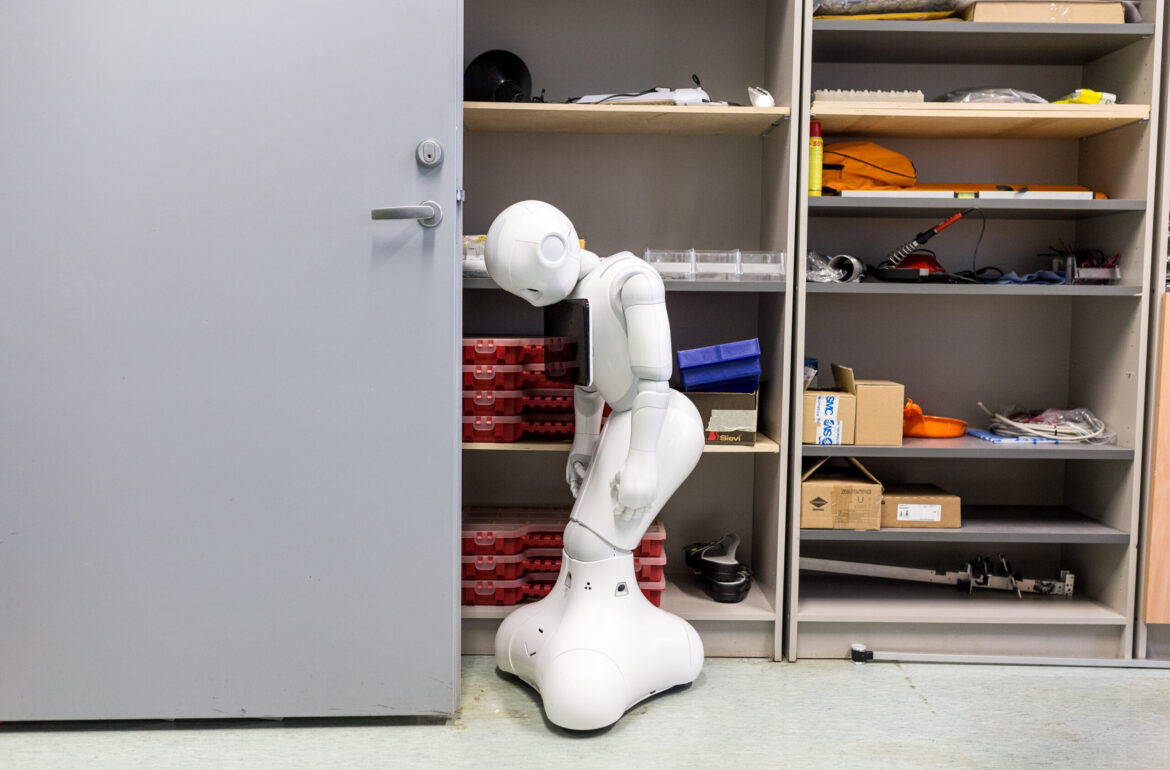Students in Tartu are building Estonia’s first humanoid robot, a robot that looks and acts like a human. In the future, the robot will have a sympathetic face and will be used to encourage children with developmental speech challenges to speak.
For example, if you tell Semubot its name, it will turn to look at you. In fact, Semubot’s sense of hearing is provided by several microphones: the robot’s eyes move in the direction where the sound first reached the microphone. This allows the robot to understand children with communication difficulties.
“We already have a cooperation with the University Hospital of Tartu, where the robot is used to develop communication skills in children. It turns out that when a child interacts with a robot, he or she opens up more easily. With the support of a professional on the side, children’s communication skills can be developed,” Karl Kruusamäe, an associate professor of robotics at the University of Tartu, said.
Another goal of the joint project between the University of Tartu, the Pallas School of Art and the Estonian Academy of Arts is to provide students with professional experience. Input from engineers, electronics, mechanics and artists will be needed at various stages of development.
My contribution was to animate a face, where the eyes and the mouth move,” Lisete Viimsalu, a second-year sculpture student at Pallas, said.
The robot’s face is made attractive by the big eyes and the twinkle in the eyes: “The robot is interested, so to speak, to see how you are, how you feel.”
In the project, Pallas students first create a clay model of the Semubot. The model is then scanned into a computer, where the robot’s movements can be simulated. Engineers use computer simulations to create a physical form for the robot.
“The Semubot’s body is made of materials readily available in online stores, such as aluminum rods and 3D-printed parts,” Leonid Zinatullin, a physics student at the University of Tartu, said. The creators said that it is also important that Semubot will be an open source project: in other words, it can be adapted, rebuilt and improved by any end user.
Pallas sculpture student Paul Jean Otto Faucheaux said the search for the robot’s appearance is still underway. “All these parts are just examples. A robot may not look like this at all,” he said, pointing to one of the shapes that inspired the robot’s current appearance. Most importantly, the robot’s legs are in place, meaning it will move on three wheels.
In addition to talking to children, Semubot could perform any communication task. For example, it could work as a customer service representative, an elderly companion, or a nurse’s aide. All of this requires body language that looks human. “In the current iteration, we think there is a little bit of movement in the arms and a little bit of movement in the neck,” Zinatullin said.
Semubot’s two-year project has been running for a year now. The final robot will be ready in about a year.
This article was originally published on the Estonian Public Broadcasting online news portal.
 Back
Back



